The Paradigm of Woolfian Fiction and Modernism in a Selection of Works
In dialogue with the series Poetics of Skin by Rosalyn Driscoll
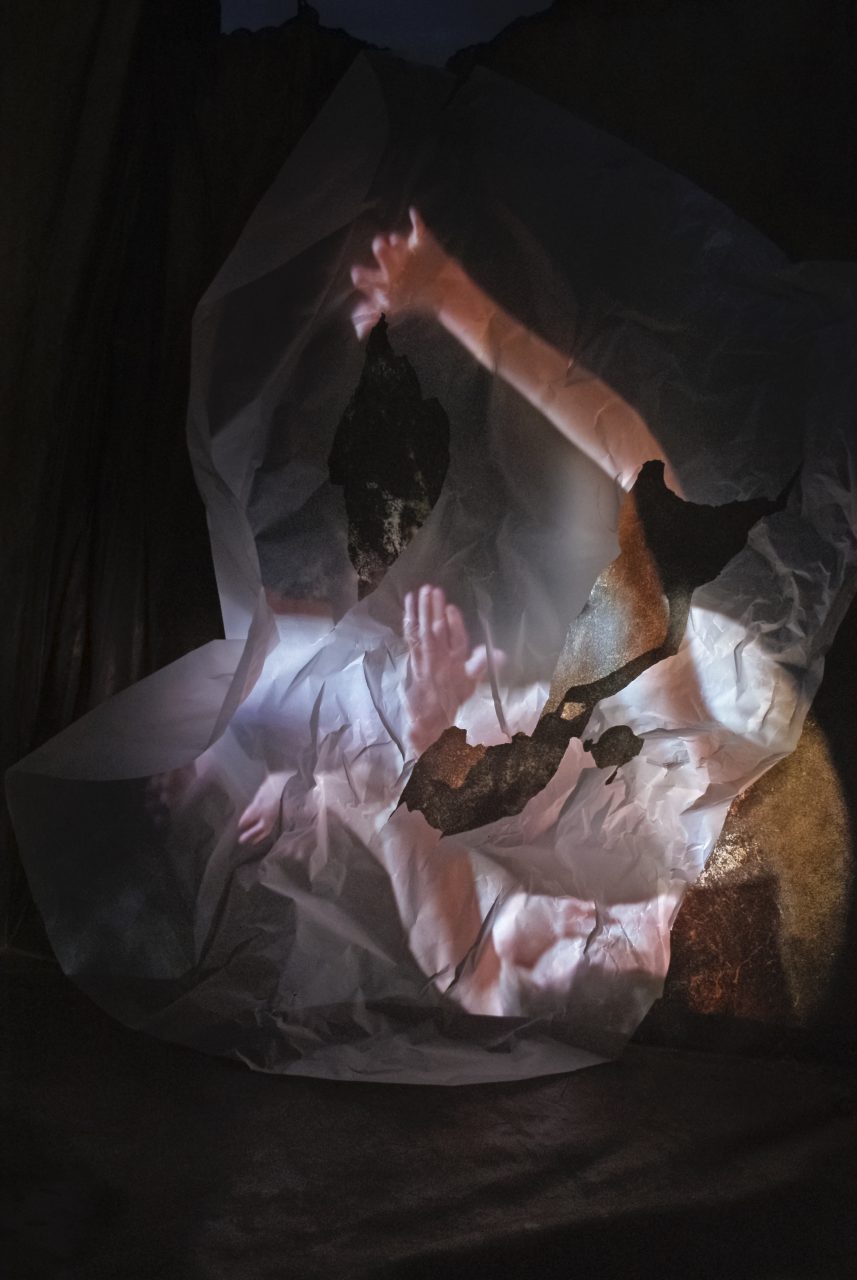
The purpose of this short essay is to illustrate the persistent oscillation between pangs of anguish and access to hope, not only in Virginia Woolf’s fiction but also in schizophrenia. I will attempt to exemplify how anxiety or anguish—which I put on an equal footing—may be connected with both a lack of personal links and a sentiment of absurdity, which both hinders coherence and is hindered by it.
In order to maintain meaning, and thus hope, 20th century literature resorted to new bearings, both formal and thematic. The reflexivity brought about by metatextuality allowed writers to question language and to consider their own art; transparency keeps away denial and encourages analysis when anguish bursts out. Thus, Elpis (hope), which remained in Pandora’s box after the evil spirits had been released, is made possible by the cathartic nature of art, and acts as a reprieve when pain tears the ego asunder.
Because creation and psychosis have been associated for centuries, I venture that art is an open window for psychotics in the same way as it was a support for Virginia Woolf. As James Joyce said, “No pen, no ink, no table, no room, no time, no quiet, no inclination.”
Anxiety is specifically a human feeling—contrary to fear, which is also part of the animal realm. In the human psyche, undefined fear may emerge, giving birth to the sudden consciousness that the fundamental questions burning inside a human being are betrayed by the glaring absence of responses to them.1 Anxiety has not only been dealt with by philosophers like Heidegger and Kierkegaard, but also by many an artist. When Sartre considers the human being as “an individual devoid of a message,”2 the question of the loss of meaning is raised, and may account for the painful relation of the individual to what Heidegger called Dasein.3 Humans effectively experience nothingness as a corollary of being on Earth and not as an antagonist. Thus, the “uncanny,” the feeling that we are not at home in our own home, causes anxiety.
The invasion of anguish—I use it as a synonym—may be episodic, erratic, or structural, as in psychosis. It constitutes a well-known symptom in schizophrenia. A chaotic and warped perception of reality is often related to this sensation, the name of which is derived from Latin, signifying “oppression, suffocation.” Long-term and chronic in most cases, schizophrenia frequently engenders massive assaults of anguish. Drug-taking, which includes cigarette smoking, overeating (or the reverse), lack of physical exercise, scarification, inertia, and the hearing of voices, are all obvious symptoms of pathological uneasiness, and are behaviours that can lead to death thoughts.
I would suggest that Virginia Woolf’s works, which are at the crossroad between schizophrenic pain and attempts of redemption, render the mechanisms of anxiety. Woolf’s fiction is peculiarly emblematic of the schizophrenic mind, which oscillates between pangs of anxiety and moments of grace, found mostly through creation. Elpis, left behind in Pandora’s box, is a potential way out, at least temporarily.
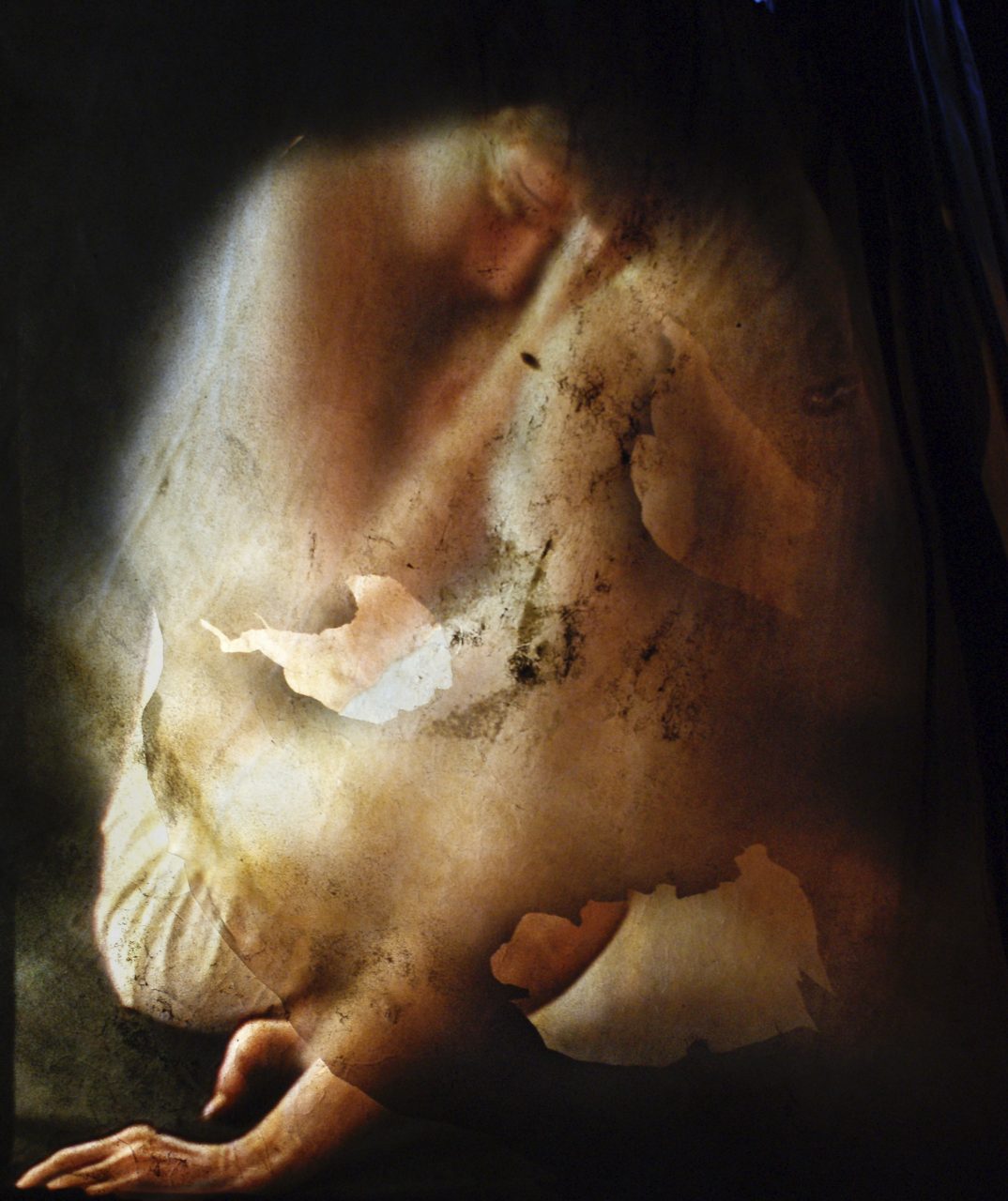
Isolation and Absurdity
Before any other consideration, I shall fathom the logic of anxiety. Seemingly, two notions are involved—that of isolation and that of absurdity. On the one hand, anguish is provoked by unachieved communication, in conversation or in psychic functioning. On the other hand, it emanates from a sense of absurdity which endangers wholeness. Two aspects are to be emphasized. First, absurdity questions the justification of the existing self and insinuates the illegitimacy of occupying one’s place in a world, devoid of any unifying thread. Second, anxiety includes a feeling of danger for psychotics, who feel profoundly menaced by dislocation, namely by a partial image of themselves and by an erroneous view of their body—called “dysmorphophobia” in medical terms when the ill-being is extreme. For instance, in The Waves, it is “perpetual warfare”4 since the mirror “shows… heads only; it cuts off… heads” (TW, 29). The vision is a reminder of Lacan’s description of the mirror stage in schizophrenia. The specular image the mirror gives is distorted; the perception of the ego is deformed as well, thus plaguing the positive evolution of the psyche. Anxiety is a signal of an intrinsic pitfall in structural identity. Lacan says:
L’assomption jubilatoire de son image spéculaire par l’être encore plongé dans l’impuissance motrice et la dépendance du nourrissage qu’est le petit homme à ce stade infans, nous paraîtra dès lors manifester en une situation exemplaire la matrice symbolique où le je se précipite en une forme primordiale, avant qu’il ne s’objective dans la dialectique de l’identification à l’autre et que le langage ne lui restitue dans l’universel sa fonction de sujet.5
Anxiety takes on different shapes in Woolf’s fiction—it even gets inserted into the personalities of characters such as Septimus or Rhoda. In Mrs. Dalloway, the shell-shocked Septimus is confronted with sharp solitude. There is a sense of helplessness coming out of his distress. He undergoes “thunder-claps of fear”6 which are imputed to the absence of a continuum—to a form of interruption—so that he feels “that eternal suffering, that eternal loneliness” (MD, 27). Two juxtaposed phrases, separated by caesura as in poetry, “There was his hand; there the dead” (MD, 27) is even more significant as it is enriched with a metonymy; the “hand” stands for the whole corpse, which accentuates the scattering of the utterly dismantled body. Conspicuous division is reinforced by the fact that, as Septimus declares, “the world itself is without meaning” (MD, 97). In the novel, psychically exhausted, Septimus eventually commits suicide (MD, 165). Somewhat differently, in The Waves, Rhoda is unable to cross a puddle—she is “outside the loop” (TW, 15) and “without anchorage” (TW, 91).
Consequently, absurdity precipitates the abandonment of the basic justification of being, normally guaranteed by global oneness. I would suggest that fractioning and the meaninglessness attached to it ground anxiety. One may draw the comparison with an absent conductor who could not connect all of the musicians with one another, leaving each of them to play on their own and resulting in disorder and dissonance. Phrases about dispersion and tumult are abound in Between The Acts: “quivering cacophony” (BA, 124), “words became inaudible” (BA, 84). If “solitude [comes] again” (BA, 121), then “death, death, death” (BA, 107) appears. The etymological sense of “schizophrenia” resides in the “splitting up of the mind.”7 In this way, the popping up of fragments is noticeable, occasioning sombre thoughts and mirroring “separatism” (Bart is “a separatist,” BA, 72). Logically, the more reality is perceived as parcelled, the sorer it is. In The Waves, if the “six-sided flower; made of six lives” (TW, 175) believes in Bernard as a federating storymaker, it also finally fails to assemble all the protagonists altogether. Mimetically, Woolf, like her persona, endeavours to expand her power as a novelist to remedy “scraps and fragments” (BA, 26).
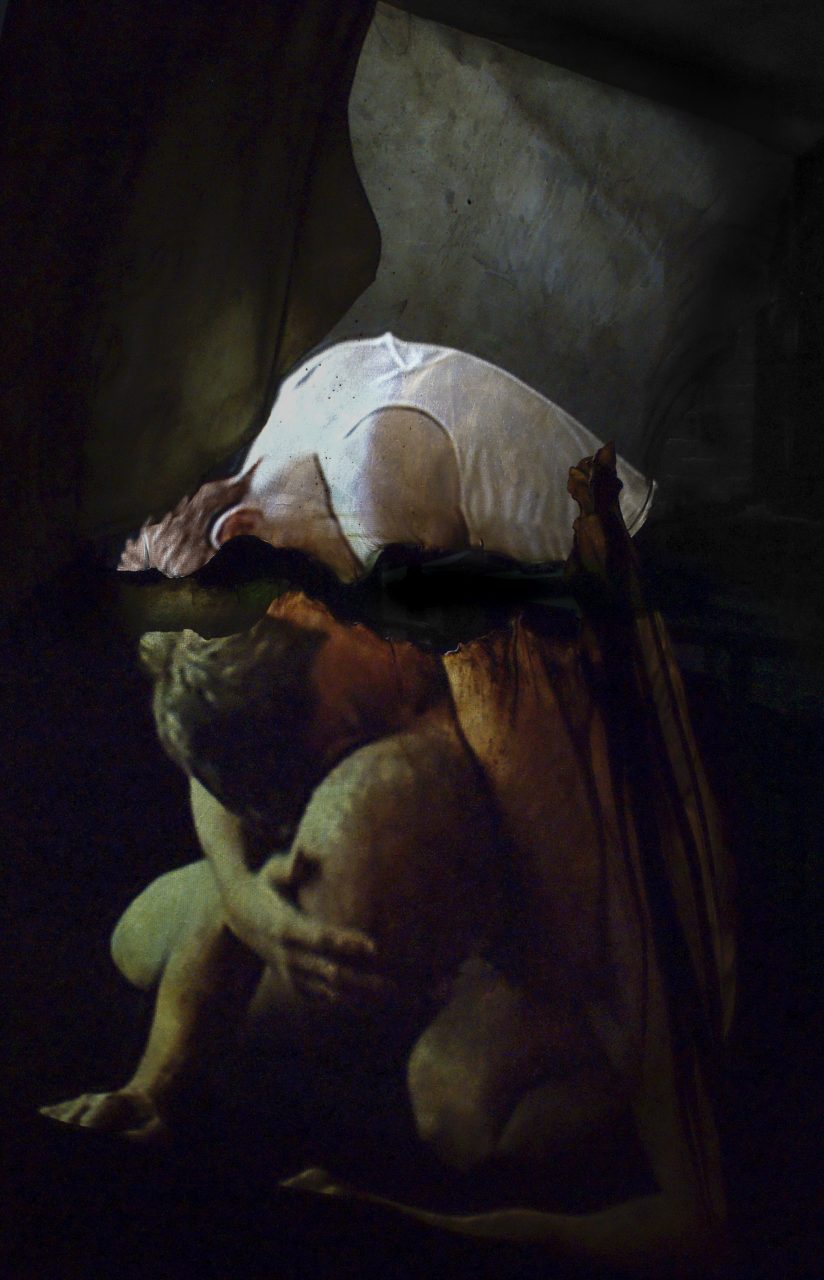
Reality and Suffering
An important topic in 20th century literature, communication is examined into every corner. In a reflexive manner, literary works formulate metatextual questions about language and about the writing process. In “Modern Fiction,” Woolf advocates that literature be updated. She opposes “materialists”8 and insists on the urgency of rendering “the fragment before us,”9 facing naked truth. Essentially, communication with the outward world is presented as dodgy, sometimes aborted, and at the least problematic, as in Beckett’s plays—Waiting For Godot defines deep solitude, in Kafka’s—Gregor in The Metamorphosis is relinquished in his room, and in Ionesco’s work, whose plays are composed of fake dialogues. Rather importantly, if absurdity contaminates understanding between individuals, and the other way round, then the lack of interrelation is crucial, leaving anguish unhealed. Typically, the functioning of the brain is made possible thanks to interactions between neurons. As a counterpoint, in the incipit of The Waves, dialogue is disjunctive and isolated pieces pervade it. The whirled-asunder brain is totally discomposed. Here, strikingly, the principle of schizophrenia is reproduced. The disease determines a cognitive default which shakes up junctions, preventing the shaping of a whole and bringing about anxious detachment.
“I see a ring,” said Bernard, “hanging above me. It quivers and hangs in a loop of light.”
“I see a slab of pale yellow,” said Susan,” spreading away until it meets a purple stripe.” “I hear a sound,” said Rhoda, “cheep, chirp; cheep, chirp; going up and down.” (The Waves, p. 5)
Creation and Hope
Reality hurts. Pain is misunderstood. Anguish is gaping. Thus, evoking The Waves, Warner forcefully points out the “contradictory and destructive coherence”10 which invades the playpoem. Sallie Sears stresses relevant characteristics about Between The Acts: “Interrupted speech… quotations, abortive communication, fragments of sentences, truisms, homespun verse.”11 Cutting off dialogues and truncating sentences, staging structurally divided characters such as Rhoda in The Waves, erasing formal and thematic threads, Woolf describes a tormented, psychotic psyche.
Importantly enough, psychoses are concerned “with a caesura with the external world.”12 The ego, having been ill-constructed since the mirror stage, presents a cluster of symptoms inferring constant deficiency in the thought process. The “stream of consciousness” defined by the modernists imitates the voice that makes commentaries in the psychotic mind in a hallucinatory mode. The “mental instability”13 from which Woolf suffered, and the art she produced, reminds one of Aristotle’s Problem XXX, which establishes a close relation between psychic troubles and the creative spirit. In order to vanquish anxiety, devices such as humour and irony may bring hope and the intention to get out of the inward voyage made of turmoil and affliction. Creation and hope are closely interlaced in psychoses. Both represent a solution and an opening. In Woolf’s fiction, distance and off-beat humour substantiate the search for alleviation of the burden.
If Orlando is an overtly playful comedy, Between The Acts is noticeably governed by irony and derision. The novel retraces English history sarcastically. Tools are used to evoke and even trespass dismemberment, specifically rhythm and symbolism. The gramophone with its “chuff, chuff, chuff” (BA, 90) and its “cut cut cut” (BA, 23) is a recurrent element in the work. The aim seems to consist in avoiding abruptness through reiterations and literary choices. The emphasis is not on the representational, but on poetic, highly creative “non-events.”14 Once again, Woolf’s experimentation is well-inscribed in modernism, and in the will to bridge shattered pieces. Attempts are made and new ideas flourish to depict the miscellaneous assaults occurring in the mind. Woolf convokes hope when, as in Between The Acts, she endeavours to make communication happen, as does her double, Miss La Trobe, who, beyond doubt, makes an effort to create.
Woolf was not the only experimental writer of her time. Her creative intentions are shared, implying the expression of anxiety and the need to tell. James Joyce had contradictions. Swapping his religious faith for a passionate faith in art, he offers luxuriant writing, conceiving his heroes as his doubles and blurring conventional frontiers. He resorts to creation as a way out: “Reproduction is the beginning of death,” says one of his characters.15 Modernism shook up consensual and acknowledged views of art. Along with psychoanalysis, it enabled a new dimension to emerge; the actual concern was to inspect the multiplicity of the psyche and its intricate passages. In the 20th century, the realism of the mind, away from social issues, is at stake.
Mrs. Dalloway opens in medias res on the single day of the narrative. From beginning to end, the reader hears characters thinking aloud, and is plunged into a mind whose occurrences are utterly intimate. Everything which “scores upon consciousness” (“Modern Fiction,” 154) “the proper stuff of fiction” (ibid). Poetry turns out to be a means of redeeming the internal vortex. Ranging from details of imaginary life, as in “The Mark On The Wall,” to the treatment of war and patriarchy, Woolf’s fiction covers all fields. Sometimes, creation cannot wait—if pain is persistent, artistic invention is a compulsory crutch. Considering that “fragment” is derived from the Latin word “frangere,” meaning “to break,” Woolf’s work is indeed permeated with breakages. Yet in her fiction, discontinuities are always made up for by the “ring” (TW, 5), by the “circle” (BA, 40), and by “bubbles” (TW, 197), which constitute symbols of smoothness despite all the “cracks in the structure” (TW, 86). Hesitations between anxiety, the tearing out of pain, and experiences of salvation are palpable. When I look into the epilogue of Between The Acts, hope comes out of shared words between Isa and Giles. Redemption is at hand, making sense out of dissolution thanks to the abolition of division. The ending in Between The Acts—Isa and Giles talk again—will not prevent Woolf from drowning herself the same year her novel was released. That is why one conceives the passage from anxiety to hope as a constant hesitation and, at times, a failure.
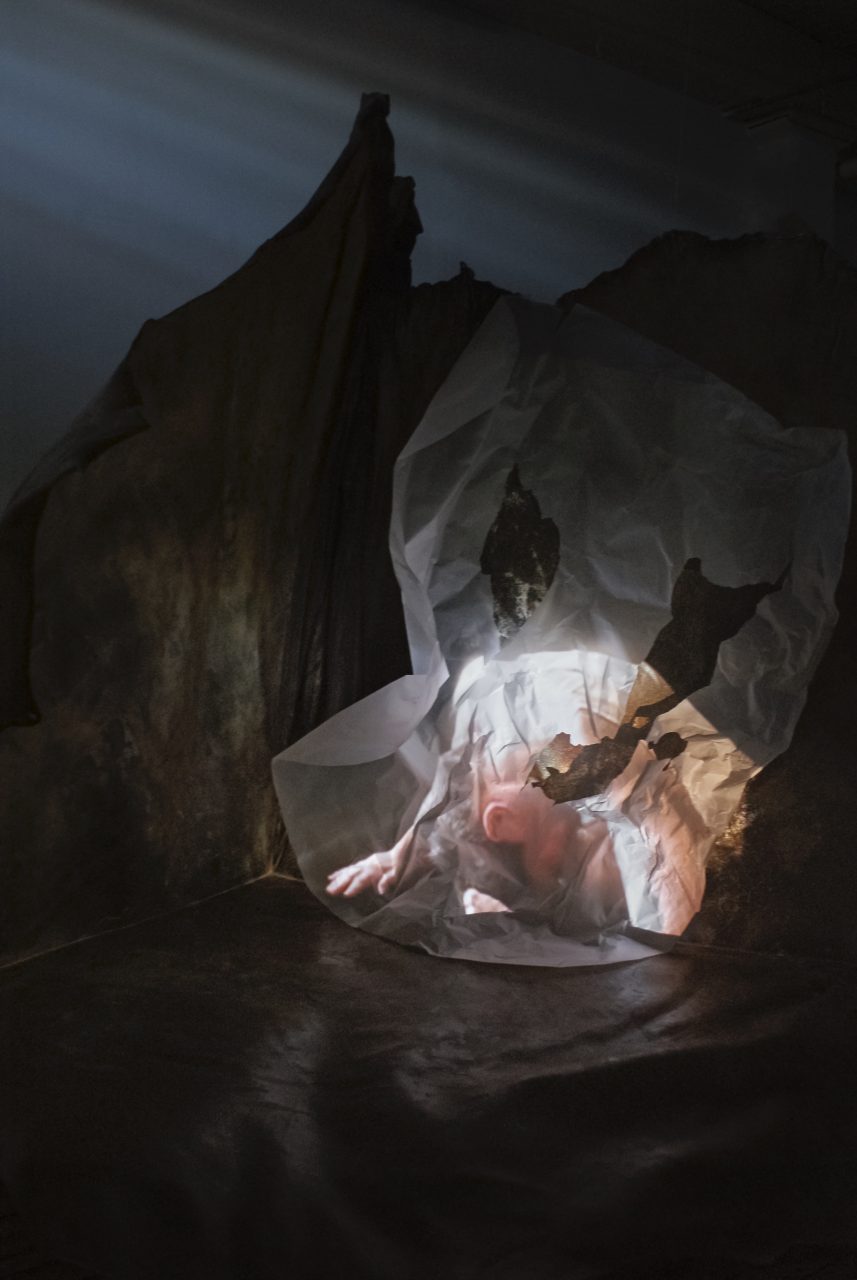
Between the Real and the Abstract
Woolf’s literary work contains structural fissures. The impression that a fight is artistically engaged cannot escape her readers. Still, as creation induces transcendence, and as it trespasses the prosaic aspects of reality, they are inclined to get out of their possibly enclosed world to accede to the visibility of the inward realm. The hovering between the real and the abstract, or between the solid and the shifting, redefines the notions of identity and of continuity, which recalls Derrida’s terminology of différance:
[…] la différance est la différence qui ruine le culte de l’identité […]; elle signifie qu’il n’y a pas d’origine (unité originaire). Différer, c’est ne pas être identique.16
Creation is perhaps a way to fill in the gaps in identity through the elevation of the author’s voice, making things “visible,” as Paul Klee states.17
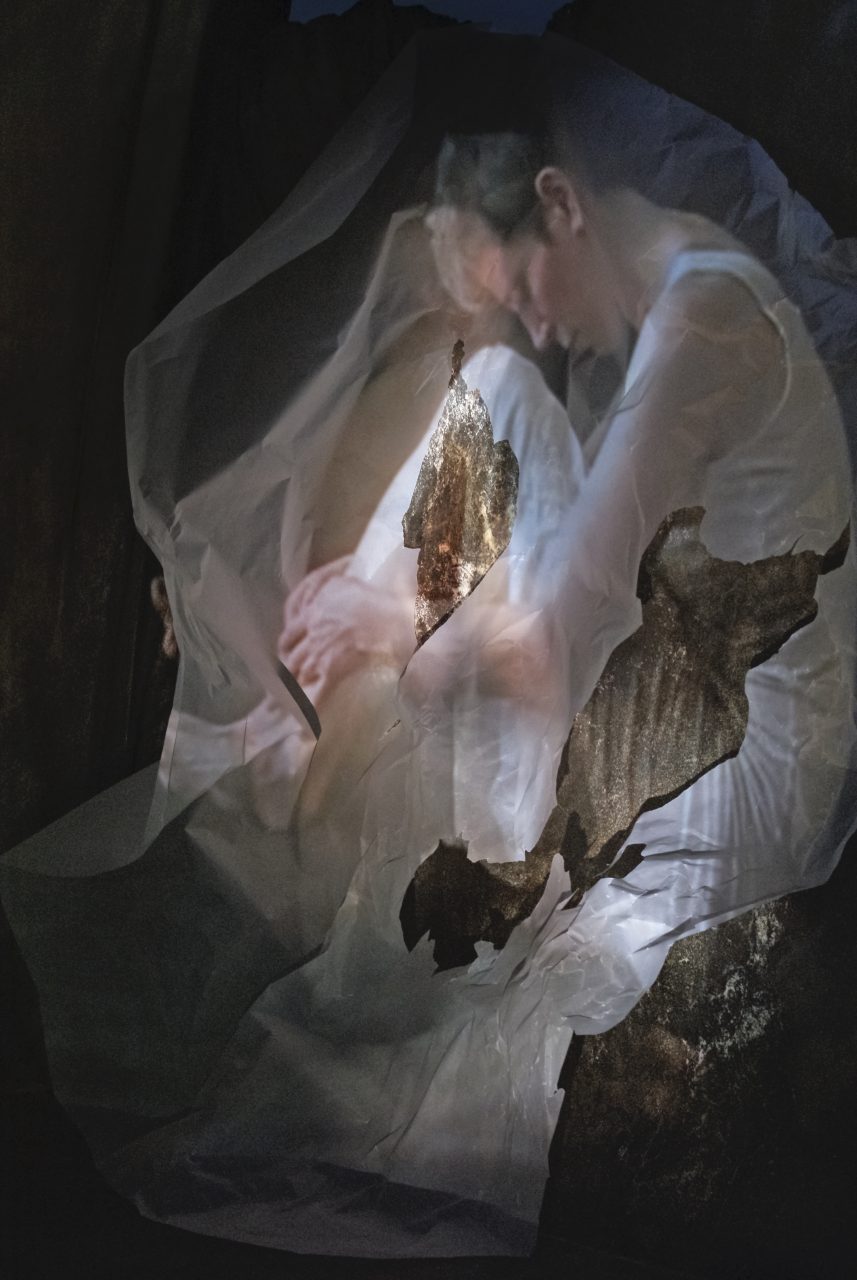
Woolf and Chaos
Modernist works, Woolf’s in particular, experiment with rendering the plurality of the human mind and its pangs of anxiety. Woolf’s mind was diseased and, obviously, she used literature to live with her symptoms. Being psychotic, she was torn by inward tensions. In such a context, creation imposed itself as a meaningful device to cohere, to stand up, to contain, to heal. In Between The Acts, there is a dismembered dimension; even the gramophone or the reflections in the looking-glass participate in gloomy atmosphere and in overall disarray. Since anxiety pierces the “halo,” the “thin envelope of life” (“Modern Fiction,” 150), storytelling is needed to see “the flower and tree entire” (BA, 10), to keep in motion, to “circle together” (BA, 40). Hopefully, literature leaves traces which make sense. At the juncture between art and confessions, between literary experimentation and therapeutic work, Woolf’s fiction is emblematic of the passage between volatile thought to tangible work of art and between the noble intention of being an insightful writer and the practical necessity to calm down. Lacan’s definition of “full speech” is totally adapted to her creative action. Each sentence is thought over and loaded with accurate observation and psychic deciphering. Eventually, the act of writing becomes an act of survival. “By addressing an Other, who in turn translates the enigmatic experience of suffering, the subject creates a link for transference.”18 The chance to be read proceeds from the will to justify the pain by the foregrounding of hope and of a reprieve.
Woolf searched for threads to unite both her work and her mind. At times, moments of hope were possible although “moments of being” were often too harsh to experience. The couple of stones that she put in the pocket of her coat and which took her deep down in the river are symbolic of Woolf’s unspeakable pain to live life as it was despite words, despite audacity, despite genius.
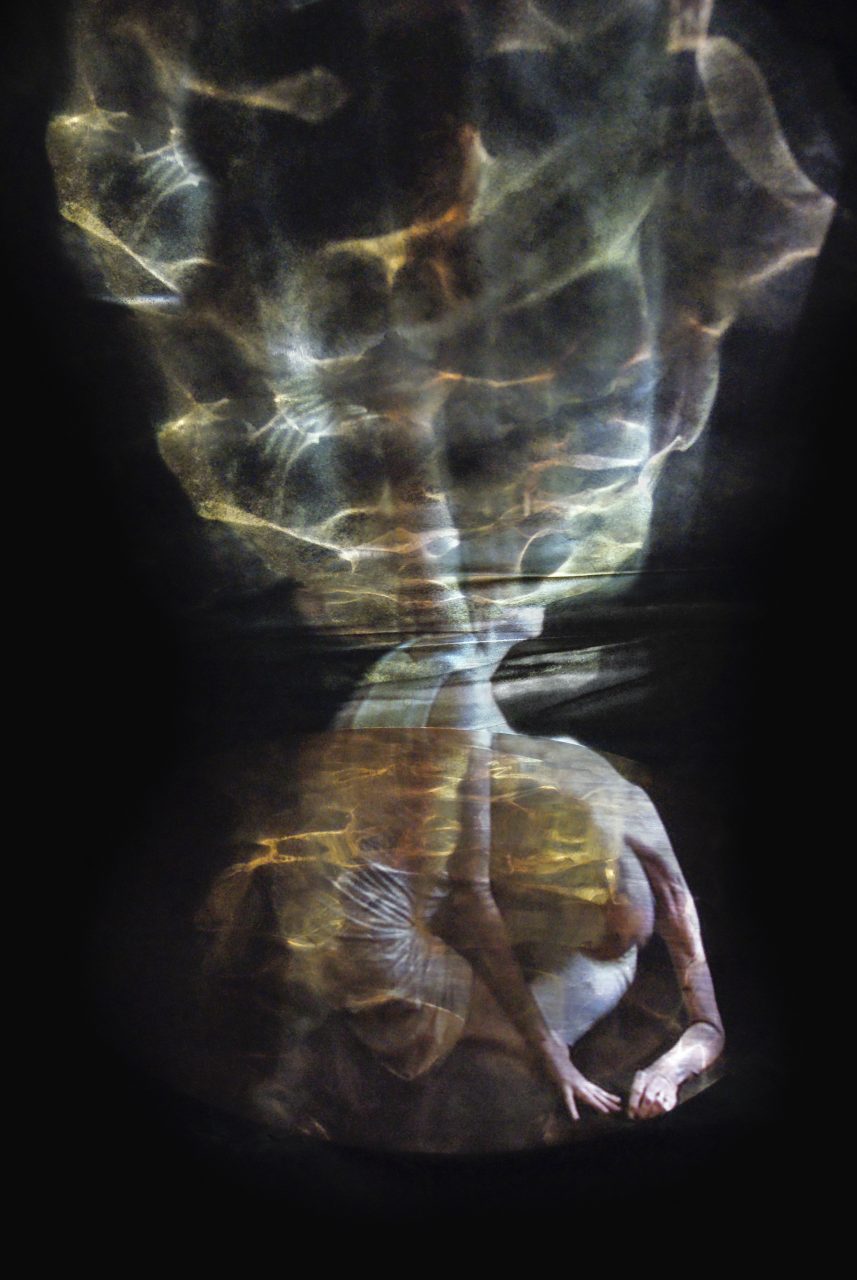
- Jean Brun, “L’angoisse,” Encyclopédie Universalis, Paris, Corpus 2, p. 150.
- See Heidegger’s Dasein, Martin Heidegger, Être et Temps, Gallimard, (1927), 1986.
- Ibid., p. 151.
- Virginia Woolf, The Waves, London, Penguin Books, (1931), 1992, p. 205.
- Jacques Lacan, “Le Stade du miroir comme formateur de la fonction du Je,” in Écrits, Seuil, (1949), 1966, p. 94.
- Virginia Woolf, Mrs. Dalloway, London, Penguin Books, p. 95.
- Solenne Lestienne, “La Schizophrénie, Vecteur d’exclusion, idéalement intégrée,” Paris: Revue française de psychiatrie, 2013, p. 63 (my translation).
- Virginia Woolf, “Modern Fiction,” in The Common Reader, Harvest book, (1925), 1984, p. 147.
- Ibid., p. 151.
- Eric Warner, The Waves, Cambridge, Cambridge University Press, 1987, p. 58.
- Sallie Sears, “Theater of war in Between the Acts,” in Jane Marcus (ed), Virginia Woolf, a Feminist Slant, Nebraska, University of Nebraska, 1983, p. 212.
- Solenne Lestienne, « La Schizophrénie », p. 63.
- Georges Spater and Ian Parsons, A Marriage of True Minds, An Intimate Portrait of Leonard and Virginia Woolf, New York, London, Harcourt Brace Jovanovich, 1977, p. 58.
- Michael Hollington, Svevo, “Joyce and Modernist Time,” in Modernism: a Guide to European Literature, 1890-1930, Malcolm Bradbury and James Macfarlane Editions, London, Penguin, 1976, p. 430.
- James Joyce, A Portrait of the Artist as a Young Man, Dover Thrift Editions, (1916), 1994
- Lucie Guillemette and Josiane Cossette, “Déconstruction et Différance.”
- Klee quoted in San G. Di, Lazzaro, Klee, Paris, éditions: Fernand Hazan, 1957, p. 105.
- Jorge Santiago, “Beyond Full and Empty Speech.“

Primary sources
Woolf, Virginia. Between the Acts. Penguin Books, (1941), 1992.
—. Mrs. Dalloway. Penguin Books. (1925), 1992.
—. The Waves. Penguin Books, (1931), 1992.
Secondary sources
Brun, Jean. “L’Angoisse.” Encyclopédie Universalis, Paris, Corpus 2, 1988.
Heiddeger, Martin. Être et Temps. Gallimard (1927), 1986.
Hollington, Michael. “Svevo, Joyce and Modernist Time,” in Modernism: a Guide to European Literature, 1890-1930. Malcolm Bradbury and James Macfarlane Editions, London, Penguin, 1976.
Joyce, James. A Portrait of the Artist as a Young Man. Dover Thrift Editions (1916), 1994.
Lacan, Jacques. “Le Stade du miroir comme formateur de la fonction du Je.” In Écrits, Seuil (1949), 1966.
Lazzaro, G. Di. San. Klee. Editions: Fernand Hazan. Paris, 1957.
Lestienne, Solenne. “La Schizophrénie, Vecteur d’exclusion, idéalement intégrée.” Paris: Revue française de psychiatrie, 2013.
Sears, Sallie. “Theater of war in Between the Acts.” In Jane Marcus (ed), Virginia Woolf, a Feminist Slant, Nebraska, University of Nebraska, 1983.
Spater, Georges and Ian Parsons. A Marriage of True Minds, An Intimate Portrait of Leonard and Virginia Woolf. Harcourt Brace Jovanovich: New York, London, 1977.
Warner, Eric. The Waves. Cambridge, Cambridge University Press, 1987.
Woolf, Virginia. “Modern Fiction.” In The Common Reader. Harvest book, (1925), 1984.
Internet sources
Cossette, Josiane and Guillemette, Lucie. “Jacques Derrida, Déconstruction et Différance” 2006.
Santiago, Jorge. “Beyond Full and Empty Speech.” 20 August 2020.
Independent scholar with a degree from the University of Paris Diderot, Paris 7, with a Master of Arts degree in English. She has a particular interest for the work of Virginia Woolf and Henry James. From 2014 to 2018, she had a column in a magazine dedicated to handicap matters. She is also a painter who regularly exhibits in Paris.
Rosalyn Driscoll is trained in art history at Smith College, Rosalyn Driscoll worked as curatorial assistant in the Asian department of the Yale University Art Gallery before studying fine art at Silvermine College of Art in Connecticut. The imagery of her early work in painting and drawing derived from the body–first the visible body, then the anatomical body, and finally the body abstracted from experience.
Independent scholar with a degree from the University of Paris Diderot, Paris 7, with a Master of Arts degree in English. She has a particular interest for the work of Virginia Woolf and Henry James. From 2014 to 2018, she had a column in a magazine dedicated to handicap matters. She is also a painter who regularly exhibits in Paris.
Rosalyn Driscoll is trained in art history at Smith College, Rosalyn Driscoll worked as curatorial assistant in the Asian department of the Yale University Art Gallery before studying fine art at Silvermine College of Art in Connecticut. The imagery of her early work in painting and drawing derived from the body–first the visible body, then the anatomical body, and finally the body abstracted from experience.
